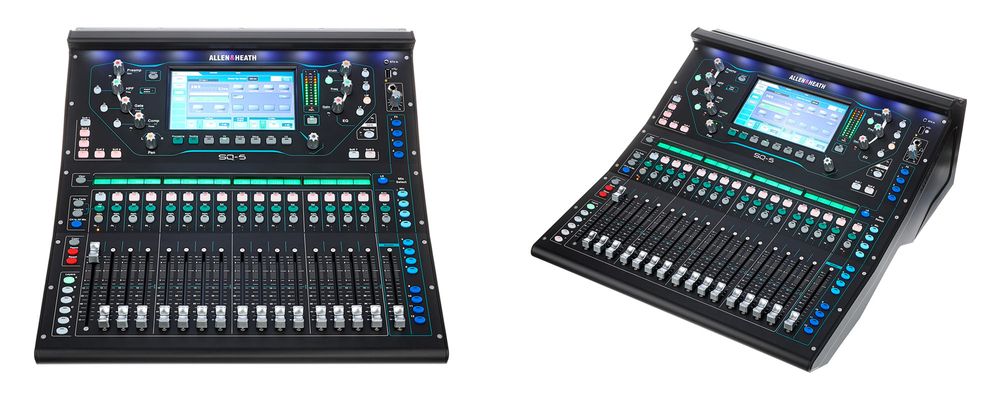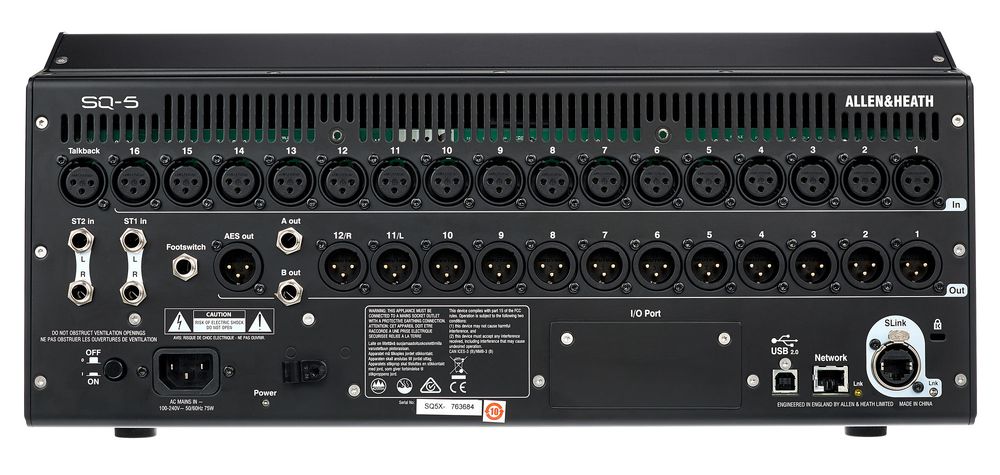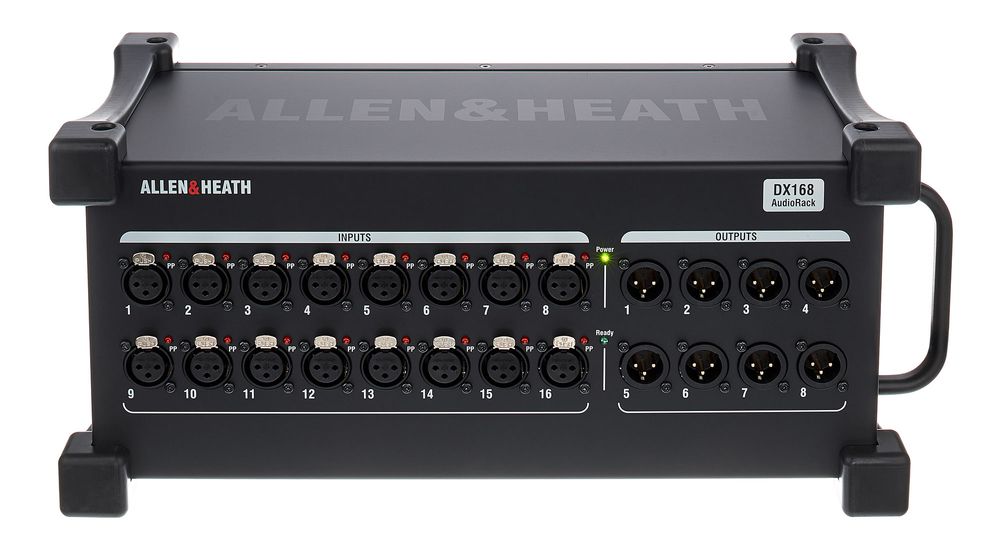6. Expandability and Connection
In contrast to analogue mixers, a digital console often has more going on than meets the eye at first glance.

Very compact digital mixer with 20 local inputs and 48 mixable inputs
With the local inputs, you might hit your limits in many applications pretty quickly. Often, the mixer's DSP (digital signal processor) is designed to handle more channels than the available local inputs. Usually, within a mixer series, there are multiple versions varying in physical size but featuring the same processor.

Digital mixer with proprietary SLink transmission protocol
Besides various analogue inputs and outputs, many mixers have a network interface for digital audio transmission. Here, compatible digital stage boxes with the same transmission protocol can be connected.
These stage boxes serve both to expand a mixer, allowing for more physical inputs and outputs, and as actual stage boxes. Instead of using a bulky and heavy analogue multicore, you simply run a network cable and connect the suitable digital stage box at the stage.

Digital stage box with SLink connection
However, each manufacturer has its own way of doing things and uses a different audio transmission protocol. When connecting a stage box, it must necessarily be the manufacturer's own box with the correct transmission protocol.
While there are platform-agnostic audio transmission protocols (e.g., DANTE) that can send signals from Manufacturer A to Manufacturer B, be cautious with stage boxes. You might get the signal from a stage box to the mixer, but you won't have any control over the microphone preamplifier. Some manufacturers of DANTE-compatible stage boxes offer software solutions for this, allowing you to adjust gain and toggle phantom power (e.g., Yamaha's R-Remote or Allen & Heath DT Preamp Control).




